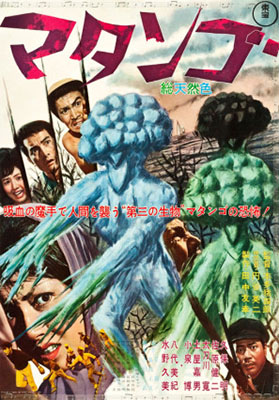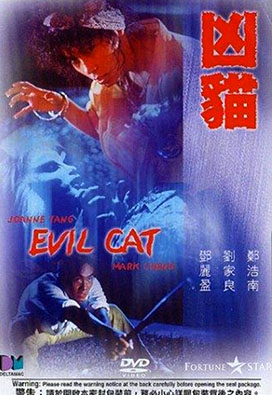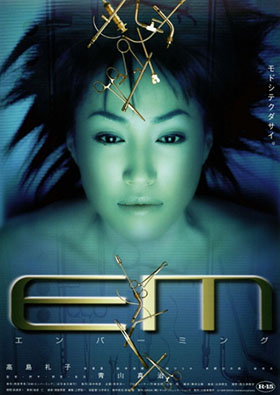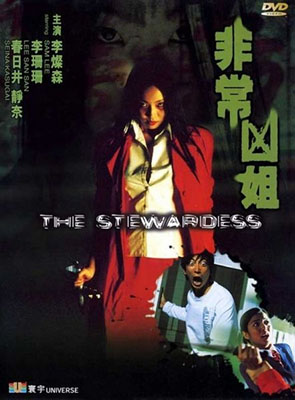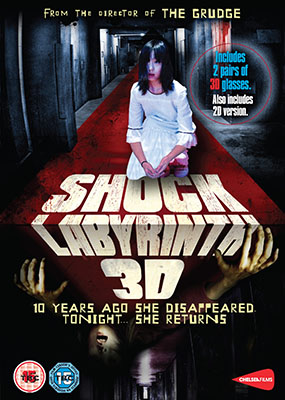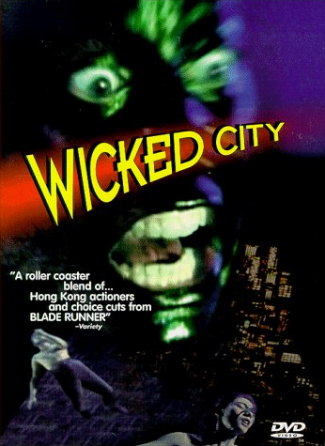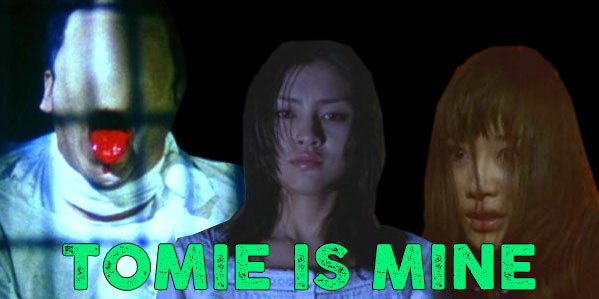
[This article contains less than 65% spoilers.]
“I will show you the girl who cannot die.”
What is everyone’s problem with Tomie, anyway? She’s just a love demon! So maybe the love she inspires drives men to kill. Is that so wrong? We are not here to judge you, Tomie my dear. We are here to help us help you help yourself. Tomie is the creation of horror manga master Junji Ito and has made quite a mark for her evil self onscreen. Out of the 8 Tomie movies (so far), Tomie: Replay is easily my favorite. Instead of picking up from either the original 1999 film (directed by Ataru Oikawa) or the awful direct-to-video Tomie: Another Face, this film, released in February of 2000 (just in time for Valentine’s Day!), jumps right into the freaky end of the pool.
A little girl is rushed into surgery when a giant mysterious tumor growing on her stomach threatens to kill her. When Dr. Kenzô Morita (played by Shun Sugata) makes the first incision, the tumor moves and he accidentally slices his thumb with the scalpel. Suddenly, the tumor begins to turn inside the girl’s distended stomach revealing a human eyeball peering out from the incision. The doctors and nurses are aghast as a young woman’s head springs forth from the little girl and says “I am Tomie.” Damn, homegirl knows how to make an entrance!
After that, Dr. Morita disappears and his daughter Yumi (played by Sayaka Yamaguchi) shows up to try and find out just what happened. Yumi meets up with her father’s mistress and even reconnects with her estranged mother Yoko but neither of them can provide any answers. Dr. Tachibana (Kenichi Endo), one of Dr. Morita’s colleagues present the night that Tomie entered the hospital, hands Yumi her father’s journal detailing the events of Tomie’s discovery and then jumps off the roof of the building.
Next we meet Fumihito (played by Yôsuke Kubozuka), a hunky dude in the hospital for dialysis and his nerdy friend Takeshi (Masatoshi Matsuo). While Fumihito is taking a long pee (he should really NOT be drinking beer in his condition), Takeshi meets a naked Tomie (played by Mai Hosho) wandering around the hospital. He instantly falls in love with this mysterious girl and takes her home seemingly vanishing off the face of the earth.
As luck would have it, Yumi meets Fumihito while they are both searching for Tomie, the girl at the center of the disappearances of Dr. Morita and now Takeshi. As the mystery surrounding this monstrous being becomes darker and more horrifying, a romance begins to blossom between Yumi and Fumihito. Will this newfound love be able to withstand Tomie’s power or will these two young people be crushed as countless others have by her irresistible and deadly charms?
Full of outrageously ghoulish setpieces and some grisly violence, Tomie: Replay is a unique horror movie that refuses to behave itself. Director Tomijiro Mitsuishi kicks all kinds of ass in his first film (and only screen credit to date) and screenwriter Satoru Tamaki keeps things bizarre and very unpredictable. While all of the scenery and the sets are beautifully shot, the sequences in the hospital is where the film really shines in all of its sickening glory. The soundtrack by prolific composer Kôji Endô (One Missed Call, Gozu) is quite haunting and really adds to the somber tone of Tomie: Replay.
Everyone in the cast is quite good and there are a few familiar faces mixed in there as well. Most notably is Takashi Miike regular Kenichi Endo (of Visitor Q and Deadly Outlaw Rekka) as the mad Dr. Tachibana. Even though he doesn’t have a major role here, I have to mention this duder. Endo starred is one of my favorite Japanese because he looks so dang weird and always plays psychos, complete screw-ups or a combination of the two. Another complete freak is Moro Marooka of “The Great Horror Family” and Infection who plays the father of the little girl who was bursting at the seams with Tomie.
Speaking of our title character, Tomie is played by the lovely Mai Hosho (of Suicide Club) who is not afraid to get down and dirty and even gives the monster some complexity and pathos. Our two romantic leads (I still can’t believe there is a romance in this one), Yamaguchi and Kubozuka, are excellent actors and give their all to roles that could easily have been completely droll and expendable in less capable hands. Super creepy points go to Shun Sugata (Ichi the Killer, Organ, Marebito, etc.) for his portrayal of Dr. Morita, a man reduced to a quivering shell in the face of all that sexy evil.
So is constantly being killed and reborn getting Tomie down? Well yeah, with all her teasing, taunting and that maniacal freakin’ laugh, she’s kind of a complete bitch. Apparently, decades (or centuries?) of shallow graves has instilled in her a significant dislike of insects. Worse still is her opinion of human beings. It is easy for her to ensnare men with her charms but they always disappoint her. At first, her suitors are willing to kill for her but then she grows bored with them and their jealousy turns deadly. Women hate her for stealing their men away and the men eventually go insane and cut Tomie into little pieces. In Replay, Tomie complains that men “break so easily” and one gets a sense of her morbid disappointment with the human race.
Other disturbing aspects of Tomie’s character are thoroughly explored here such as her hatred of all her doppelgangers. If Tomie is constantly dying, being destroyed and then regenerating, then who is the original? The answer is simple: the one left standing. Our favorite unkillable demon reproduces like it’s nobody’s business. A stray hair or even a single drop of blood can sprout a brand new Tomie. I love how the Tomies react to each other with revulsion and always try to destroy one another. In Replay, the new incarnation finds the “original’s” still living head buried in a shallow grave in the forest (no surprise there) and sets it fire! So yes, Tomie has some self-hate issues but with everyone constantly calling her a monster (and just because she is one! WTF?), I’m not entirely surprised.
Guess what, kids? Junji Ito’s recurring theme of body horror (see Uzumaki (manga or film)) is alive and unwell in Tomie: Replay with all them Tomie molecules infecting people. The idea of a contagious evil that first invades the mind and then distorts the body is a joy to behold (if you’re a sick bastard). The human (and love demon) form is warped and twisted in truly sick ways. This film contains some truly nightmarish images which are brought to life by the film’s incredible special effects. Standout scenes include Tomie’s disembodied head growing a new body and the reverse: her headless corpse growing a new head. The nastiest scene however has to be the discovery of Dr. Morita’s rotting body stuffed in a tank of saline solution.
So why do I think this is the best of the Tomie franchise (Tomie: Re-birth is a close second)? For starters, this film still frightens me every time I watch it. There are some great scares, profoundly dark ideas, and a whole mess of freaky shit that just stays with me long after I’ve watched it. Take an unstoppable evil, combine it with hospital horror, and throw in some melodrama and well, you have something really, really special. Young lovers, Tomie: Replay is your date movie.
